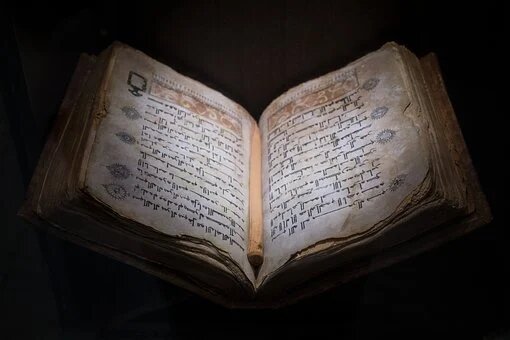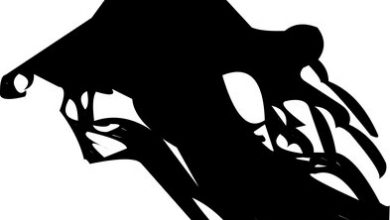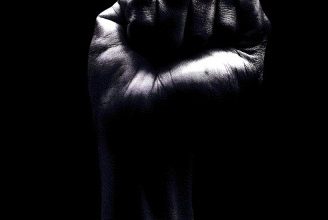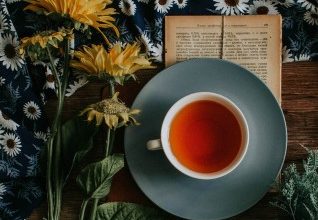
Paula Meehan’s poem “The Pattern” is about escaping destiny. It is about how we try to separate ourselves from our past mistakes and our parents’ mistakes. The speaker of this poem is afraid of her mother, but more importantly, she is afraid of what she might have in common with her. Paula Meehan’s poetry is heavily influenced by the complexities of family relationships. Buying Winkles and The Exact Moment I Became a Poet are some of her popular poems, the analyses of which may be accessed in the link below:
Analysis of The Exact Moment I Became a Poet by Paula Meehan
Analysis of Buying Winkles by Paula Meehan
The Pattern | Summary and Analysis
The speaker describes a strained relationship between herself and her now-deceased mother in her poem “The Pattern.” Although it is a poem about a deceased mother, it is not a sentimental elegy. It isn’t, however, a hateful poem. The speaker of this poem is torn between her feelings for and against her mother. She is filled with resentment, but she is also wistful, lost, and perplexed. “The Pattern” is more than anything else a poem about tackling fate.
The Pattern, Lines 1-8
Little has come down to me of hers,
a sewing machine, a wedding band,
a clutch of photos, the sting of her hand
across my face in one of our wars
when we had grown bitter and apart.
Some say that’s the fate of the eldest daughter.
I wish now she’d lasted till after
I’d grown up. We might have made a new start
The poet begins by examining a difficult relationship between her mother and herself. She lists the things she inherited from her mother after she passed away which include a sewing machine, a wedding band some pictures. She also hints at the repeated confrontations she had with her mother. She remembers the sting of a slap across her face that made them grow apart. However, the speaker also mentions regret. She is regretful of the fact that her mother passed away before she grew up and they never had a chance to make amends. She wonders that if her mother would have been alive, they might have forgotten everything that happened and have made a new start.
The Pattern, Lines 9-18
as women without tags like mother, wife,
sister, daughter, taken our chance from there.
At forty-two she headed for god knows where.
I’ve never gone back to visit her grave.
First she’d scrub the floor with Sunlight soap,
an arm reach at a time. When her knees grew sore
she’d break for a cup of tea, then start again
at the door with lavender polish. The smell
would percolate back through the flat to us,
her brood banished to the bedroom.
The poet attempts to dissociate herself from the tags that society gives to women. She thinks that had her mother been alive, she would have tried to know her as another human being. The poet is also attempting to show how women are always looked at with respect to the role they play and never as individuals. They are always characterized either as a mother, sister, daughter etc. She also admits that she has never visited her mother’s grave. The speaker then goes on to describe her mother’s role in the household. Her mother would do the tedious mundane tasks.
When her knees grew sore
The poet employs sensuous imagery of lavender polish which elevates the tedious task that the speaker’s mother embarks upon.
The Pattern, Lines 19-27
As she buffed the wax to a high shine
did she catch her own face coming clear?
Did she net a glimmer of her true self?
Did her mirror tell what mine tells me?
I have her shrug and go on
knowing history has brought her to her knees.
She’d call us in and let us skate around
in our socks. We’d grow solemn as planets
in an intricate orbit about her.
The poet imagines in this stanza whether or not her mother ever attempted to identify her true self. She wonders whether she caught a glimpse of her face when she uses the wax. She wonders did her mother ever find a glimpse of herself in the mirror – just like she does. She then goes on to describe a time when the relationships between the two weren’t very strained. Her mother would let them skate around herself in their socks. The position of the mother in the centre indicates her importance in the lives of the children. The speaker of this poem is afraid of her mother, but more importantly, she is afraid of what she might have in common with her. The idea of becoming the woman her mother was makes the speaker of this poem uneasy. She is afraid that she will follow in her mother’s footsteps of hypocrisy and abuse.
The Pattern, Lines 28-33
She bending over crimson cloth,
the younger kids are long in bed.
Late summer, cold enough for a fire,
she works by fading light
to remake an old dress for me.
It’s first day back at school tomorrow.
The author continues to describe all the efforts her mother would make for them. She keeps on working and this time she repurposes an old dress for her daughter. The fact that she works by fading light exemplifies that she works day and night. The author informs the readers that the repurposed dress is her for her first day at school.
The Pattern, Lines 34-47
‘Pure lambswool – Plenty of wear in it yet.
You know I wore this when I went out with your Da.
I was supposed to be down in a friend’s house,
your Granda caught us at the corner.
He dragged me in by the hair – it was long as yours then –
in front of the whole street.
He called your Da every name under the sun,
cornerboy, lout; I needn’t tell you
what he called me. He shoved my whole head
under the kitchen tap, took a scrubbing brush
and carbolic soap and in ice-cold water he scrubbed
every spick of lipstick and mascara off my face.
Christ but he was a right tyrant, your Granda.
It’ll be over my dead body anyone harms a hair of your head.’
The speaker then goes on to narrate one of her mother’s memories. Her mother tells her that the dress that she has just repurposed belonged to her. She tells her daughter about the time when she had put on the dress to visit her daughter’s father and how she was abused by her grandfather. Not just her but the man also had to face disrespectful language. This memory hints at the fact that her grandparents were strict and would never let their children do something they may consider inappropriate. The patriarchal society is called out here and this is reflected in the treatment of the grandfather. The grandfather could not deal with his daughter’s expression of autonomy and sexuality. The poet uses irony towards the end of the stanza. Even though the mother promises her daughter that she would not be subjected to the mistreatment that she had to face we know that she failed to keep her promise. This is evident from the sting of the slap that the daughter remembers in the first stanza.
It’ll be over my dead body anyone harms a hair of your head.’
The Pattern, Lines 48-63
She must have stayed up half the night
to finish the dress. I found it airing at the fire,
three new copybooks on the table and a bright
bronze nib, St Christopher strung on a silver wire,
as if I were embarking on a perilous journey
to uncharted realms. I wore that dress
with little grace. To me it spelt poverty,
the stigma of the second hand. I grew enough to pass
it on by Christmas to the next in line. I was sizing
up the world beyond our flat patch by patch
daily after school, and fitting each surprising
city street to city square to diamond. I’d watch
the Liffey for hours pulsing to the sea
and the coming and going of ships,
certain that one day it would carry me
to Zanzibar, Bombay, the Land of the Ethiops.
The speaker returns to the dress and mentions how hard her mother worked to prepare that dress. However, the speaker does not appreciate her mother’s efforts because for her the dress is an indicator of their financial situation. The fact that the daughter had to wear a repurposed dress indicates poverty. The speaker addresses it as “the stigma of second hand”. While reminiscing the speaker does appear to appreciate her mother’s efforts but at the moment when it happened, she despised the dress. The dress eventually gets passed on to her younger siblings. The poet here attempts to weave her imagination. She builds a kind of dream and attempts to escape her reality. She longs to go away and explore the unknown. The claustrophobia of her present situation is contrasted with the exoticism of faraway places like Zanzibar, Bombay and the land of the Ethiops.
The Pattern, Lines 64-77
There’s a photo of her taken in the Phoenix Park
alone on a bench surrounded by roses
as if she had been born to formal gardens.
She stares out as if unaware
that any human hand held the camera, wrapped
entirely in her own shadow, the world beyond her
already a dream, already lost. She’s
eight months pregnant. Her last child.
Her steel needles sparked and clacked,
the only other sound a settling coal
or her sporadic mutter
at a hard place in the pattern.
She favoured sensible shades:
Moss Green, Mustard, Beige.
The daughter then goes on to describe the limited life her mother had. Her mother is posing for a picture while she is eight months pregnant. Her mother’s life revolves around her children. They are poor and she tries to determine every possible way by which she could make ends meet. She mother has lived an unfulfilled life and her aspirations are also limited something which gets reflected by the sensible shades she wears- moss green, beige and mustard. The poet uses onomatopoeia to evoke a sensibility that befits her mother’s personality.
Her steel needles sparked and clacked,
The Pattern, Lines 78-91
I dreamt a robe of a colour
so pure it became a word.
Sometimes I’d have to kneel
an hour before her by the fire,
a skein around my outstretched hands,
while she rolled wool into balls.
If I swam like a kite too high
amongst the shadows on the ceiling
or flew like a fish in the pools
of pulsing light, she’d reel me firmly
home, she’d land me at her knees.
Tongues of flame in her dark eye
she’d say, ‘One of these days I must
teach you to follow a pattern.’
The daughter dreams of a world where she is not like her mother’s and attempts to express herself with words rather than sewing and knitting. Although, there are hints that the speaker’s mother attempts to encourage her daughter’s ambitions and desires but she clearly fails.
Tongues of flame in her dark eyes
The abovementioned line reflects ambiguity. The daughter is confused about whether to express anger towards her mother or to make amends with her. In the final lines, we can see how the speaker keeps trying to break free from this pattern, but no matter how hard she tries, she seems to fail. It’s interesting to see how Meehan switched the verbs in each simile. It appears that the daughter was unable to flee because she lacked the necessary skills. Her mind has the idea of escaping, but she has no idea how to go about doing it. Her actions are muddled, and her escape route has errors. The last line suggests how her mother might have hinted at submitting to the rules of the oppressive patriarchal society. The mother appears to be a demonic puppeteer in the final image–tyrannical, aggressive, and haunting.
When we think about Irish culture and family relationships, this poem by Meehan is especially important. Many Irish families are strict, and children who grew up in them may have been subjected to a lot of hard work, strict rules, and possibly abuse. Other factors, such as financial difficulties, mental illness, and alcoholism, are usually to blame. There are characteristics in our parents that we simply despise and, as a result, we fear that those characteristics will one day be ours as well. The speaker attempts to think that she would never make the same mistakes her parents did–and then after looking in the mirror she realizes that she had already broken it. It is difficult to truly escape who we are and the characteristics that our parents instilled in us–we can only repress them, but they will eventually surface.
The Pattern | About the Author
Paula Meehan is a poet and playwright from Dublin, Ireland, who grew up in a working-class family. Her poetry collections include Return and No Blame (1984), Reading the Sky (1986), The Man Who Was Marked by Winter (1991), Pillow Talk (1994), Mysteries of the Home (1996), Dharmakaya (2001), which received a Denis Devlin Award, Six Sycamores (2004), with artist Marie Foley, and Painting Rain (2005).





